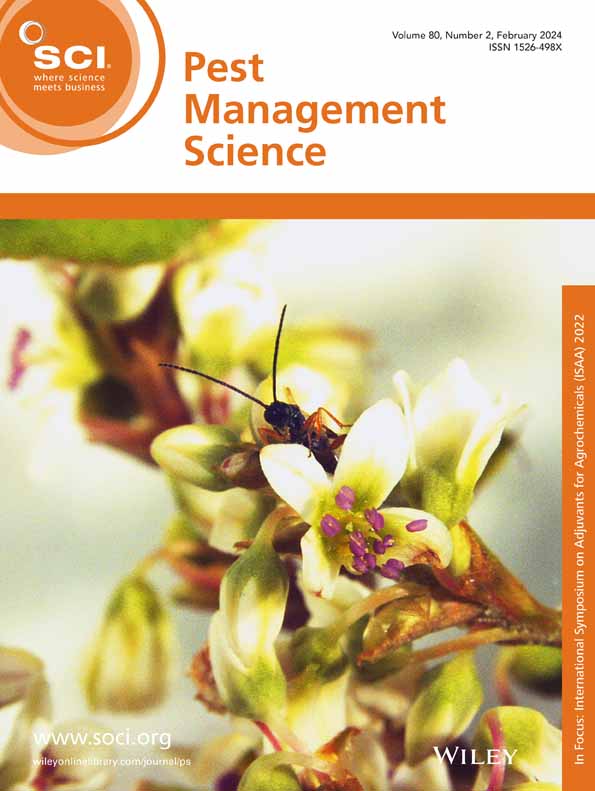Identification, pathogenic mechanism and control of Stagonosporopsis cucurbitacearum causing post-harvest fruit rot in melon.
IF 3.8
1区 农林科学
Q1 AGRONOMY
引用次数: 0
Abstract
BACKGROUND Fruit rot, caused by a range of pathogens, represents one of the most devastating post-harvest diseases of melon (Cucumis melo L.). In 2023, we isolated a pathogenic fungus, identified as Stagonosporopsis cucurbitacearum, from infected melon fruits at the a melon cultivation site in Heilongjiang Province, China. RESULTS This is the first report of S. cucurbitacearum causing post-harvest fruit rot in melons in China. S. cucurbitacearum isolates causing melon fruit rot promoted cell wall-degrading enzyme activities. Rapid degradation of host cell walls by these enzymes was associated with flesh softening and the rapid proliferation of S. cucurbitacearum, and was probably the main determinant of this fungus as a pathogen. Carbendazim and tebuconazole, the most effective fungicides, completely inhibited sporangioconidial germination at 0.00049 and 0.00161 mg L-1, respectively, and inoculating melon fruit with these fungicides at 0.000625 and 0.000172 mg L-1 reduced disease incidence by approximately 70%. CONCLUSIONS On the basis of our findings regarding the pathogenic mechanisms, host range and chemical control, we recommend: (i) application of appropriate concentrations of carbendazim or tebuconazole on the surface of muskmelons during the pre-harvest safety period, and (ii) maintaining melon fruits separate from the fruits of other hosts during storage and transportation. © 2025 Society of Chemical Industry.瓜类采后腐病的鉴定、致病机制及防治。
摘要由多种病原菌引起的果腐病是甜瓜收获后最具破坏性的病害之一。2023年,我们在中国黑龙江省的一个甜瓜种植基地从受感染的甜瓜果实中分离到一种致病真菌,鉴定为Stagonosporopsis cucurbitacearum。结果在国内首次报道了引起瓜类采后腐病的葡萄球菌(s.c urbitacearum)。引起甜瓜果腐病的葡萄球菌提高了细胞壁降解酶的活性。这些酶对宿主细胞壁的快速降解与果肉软化和葫芦状葡萄球菌的快速增殖有关,可能是该真菌作为病原体的主要决定因素。在0.00049 mg L-1和0.00161 mg L-1浓度下,多菌灵和替布康唑能完全抑制孢子孢子孢子的萌发,用0.000625 mg L-1和0.000172 mg L-1浓度的杀菌剂接种甜瓜果实可降低约70%的发病率。结论根据对病原菌致病机制、寄主范围和化学防治的研究结果,建议在采收前安全期在甜瓜表面施用适当浓度的多菌灵或戊唑唑,并在贮藏和运输过程中保持甜瓜与其他寄主的分离。©2025化学工业协会。
本文章由计算机程序翻译,如有差异,请以英文原文为准。
求助全文
约1分钟内获得全文
求助全文
来源期刊

Pest Management Science
农林科学-昆虫学
CiteScore
7.90
自引率
9.80%
发文量
553
审稿时长
4.8 months
期刊介绍:
Pest Management Science is the international journal of research and development in crop protection and pest control. Since its launch in 1970, the journal has become the premier forum for papers on the discovery, application, and impact on the environment of products and strategies designed for pest management.
Published for SCI by John Wiley & Sons Ltd.
 求助内容:
求助内容: 应助结果提醒方式:
应助结果提醒方式:


